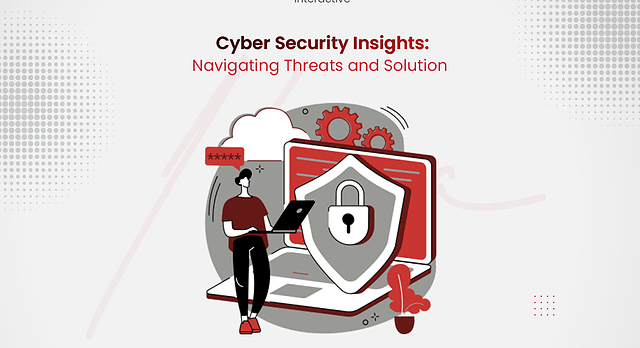Cyber Security Insights:
Navigating Threats and Solution

In the dynamic landscape of contemporary business, where
technology is seamlessly integrated into every facet of operations, the significance of
robust cybersecurity practices cannot be overemphasized enough. The digital revolution
has ushered in unparalleled prospects for growth and innovation; however, it has also
paved the way for intricate and persistent cyber threats. As organizations endeavor to
maintain their competitive edge and relevance in this perpetually evolving environment,
one undeniable reality emerges: ensuring the cyber protection of digital assets stands
as an absolute necessity.
In the realm of cyber security, a multitude of threats and solutions are present,
offering avenues to establish digital security. These potential threats can be
effectively categorized into three main groups. First, we have cybercrime, characterized
by individuals or groups targeting organizations or individuals with the intent of
financial gain. The second category encompasses cyber-attacks, which are frequently
driven by political motives, and serve as means to extract valuable information. The
final classification of threat is cyber terrorism, a tool often employed to instigate
panic, fear, and chaos within electronic systems.
Addressing cyber security entails a comprehensive organizational strategy that
encompasses several critical domains. These aspects include fortifying critical
infrastructure security, ensuring robust network security, guaranteeing the integrity of
cloud-based systems, bolstering storage security, and orchestrating disaster recovery
and business continuity plans.
Cyber Threats That May Target Your Network
Out of the multitudes of cyber threats, there are a few that organizations need to be careful of. These are malware, ransomware, distributed denial-of-service (DDoS) attacks, and advanced persistent threats (APTs). These threats can disrupt and cause financial loss, data loss and, the loss of important intellectual property. Exploring these threats and their impact on organizations, let’s start with malware. This hostile software can cause harm to a computer or network. There are a few different types of malwares each having different uses. Some can corrupt and delete files, along with being a starting point for larger network attacks. Similarly ransomware is a malware that basically holds a system’s files hostage through encryption. Access to these files is given back to the user when payment is provided to the attacker. Lastly DDoS and APTs are more intricate attacks that cause issues for organizations. DDoS attacks overwhelm the targeted system by flooding it with connection requests, packets, and messages; this renders the system unusable. APTs use a different approach; they look to intrude a network undetected extracting data from the network over a long period of time.
Crafting the Optimal Cyber Security Strategy
In terms of the countermeasures that can be taken to
mitigate cyber threats, one of the best procedures is identity and access management
(IAM). This solution specifies the roles of those working within the network so that
there is user specific access. Network administrators give access based upon roles,
granting and denying access based upon the requirements of employee roles.
Furthermore, a thorough data security platform will provide network and information
security across the network. High end data security platforms are able to provide real
time data regarding potential vulnerabilities. Allowing them give instant alerts
regarding any data breaches that may occur. The final measure that organizations should
integrate into their cyber security platforms is security information and event
management (SIEM). SIEM consolidates and analyses data regarding the security of the
network, allowing for automatic detection of any unusual user activities that may be
occurring. SIEM allows for quick and efficient mitigation of any threat.
The prospect of operations coming to a standstill should be a primary concern for every
organization. Cyber threats possess the capability to inflict significant financial
losses and to potentially disrupt or bring to a halt extensive projects or entire
organizations. This highlights why greater importance on network security and a
comprehensive strategy are imperative. Ensuring not only peace of mind but also serving
as a deterrent against a wide array of cyber threats.